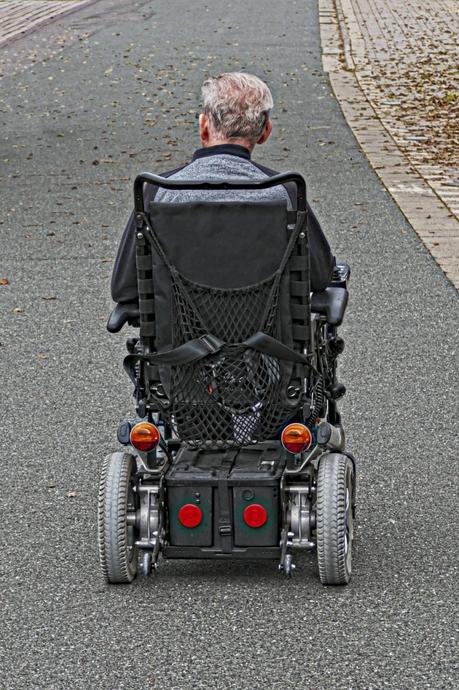
It's important for people to get around. Most people don't often think about it, but it's extremely important for people to move around and get where they need to. Most people take mobility for granted. Limited mobility can have a negative impact on your overall lifestyle, mood, and health.
You should be extremely grateful if you're mobile enough to get around. If you're sick or injured, you may have a hard time moving around like you used to. Doing simple tasks, like walking up the stairs or taking a shower, can seem challenging. Limited mobility is enough to make some people want to give up on life.
Mobility aids are created to help individuals with mobility issues get around and increase their independence. People with disabilities, certain health conditions, injuries, or at increased risk of falling, typically use mobility aids. These devices can increase confidence and reduce pain. There is a wide range of mobility aids from wheelchairs to walkers.
Power ScootersA power scooter is just another name for an electric wheelchair. They're like a battery-powered wheelchair except they have a seat on top of four wheels. You can control direction using the handlebars or steering bar.
Power scooters are ideal for those who don't have the upper body strength to use a manual wheelchair. Many scooters have made a positive impact on people's lives due to the freedom they get. Power scooters should only be used on sidewalks and some roads. Training is available for those who use a scooter for the first time.
WheelchairsWheelchairs are the most common mobility aids. They're often used by individuals who are unable to walk or don't want to put too much pressure on their lower body. They're great for those who need to travel short or long distances. Wheelchairs can be operated by the user, or pushed by someone else.
They're more suitable for individuals with long-term disabilities. The most common types of wheelchairs include sports wheelchairs, standing wheelchairs, and upright wheelchairs. Some wheelchairs are made for medical reasons while others have been made for travel, transportation, and specific sports.
CrutchesCrutches help distribute weight from the lower body to the upper body. Crutches are often used singular or in pairs. They help keep a person upright and can be used for short-term or long-term disabilities.
The most common types of crutches include axillary crutches, Lofstrand crutches, and platform crutches. Axillary crutches are used under the armpits, while Lofstrand crutches are forearm crutches used by those with long-term conditions. Platform crutches are often used by those who suffer from arthritis or cerebral palsy.
CanesCanes are very similar to crutches in the way they support the upper body. They often help people get from one location to another without risk of falling or injury. Canes take less pressure off the lower body than crutches do. They place more pressure on the hands and wrists.
Canes are ideal for preventing people from falls. The most common types of canes include forearm canes, quad canes, and walking canes. Most canes are foldable and adjustable. Walking sticks are canes that are used for non-medical reasons.
WalkersZimmer frames are best known as walkers. This metal framework has four legs that support the upper body. Common types of walkers include knee walkers, rollators, and walker-cane hybrids. Some walkers may contain wheels or gliders that can be used on carpeting. It also makes it easy for people who have limited upper body strength. These mobility aids have been used by 4.6% of adults in the U.S.
Guide DogsGuide dogs are known as trained service dogs that help blind or visually impaired people get around. There are positive psychological and health effects from owning a guide dog. Service dogs must be allowed to access a business or a public place unless serious health or safety risks exist there.
Many people can benefit from mobility aids. Anyone who has a short-term or long-term mobility issue can benefit from some of these devices. The type of mobility aid varies upon the individual's needs.
Adults who suffer a broken bone, who recently had an amputation, or are recovering from surgery can also benefit from mobility aids. People who want to use a mobility aid should speak to their physician or physical therapist to learn how to properly use the device.
Comments
comments

